
24 minute read
Living in Bigelow Hall

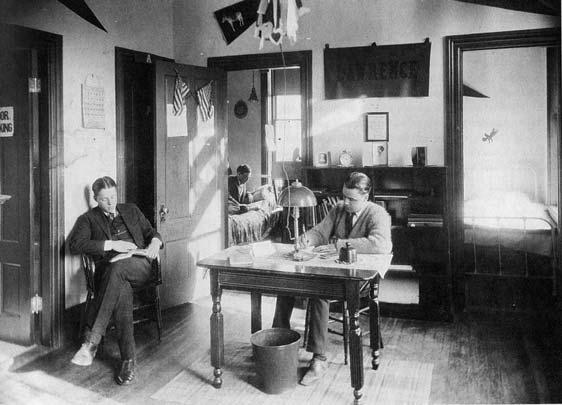
1924


2009
Living in Bigelow Hall,1954–1956
Art Tsigas ’56 moved into his third-floor room in Bigelow Hall in the fall of 1954, with the Godfrey family on the first floor. Leaving behind Lowell High School to become a boarding student at Lawrence Academy brought him literally into the halls of history. Although Waters House (1783) is the oldest building on campus, Bigelow Hall (1863) is the oldest campus building constructed for the express purpose of serving as a dormitory. The plan had been for Art to attend Lawrence Academy for only one year, but when Headmaster Fred C. Gray met with his parents, Mr. Gray said that the school could do more for Art over two years. As Art watched, his parents immediately agreed. “I’ll never forget it. It wasn’t even a discussion between the two of them or even with me. They just said, ‘That’s fine with us,’ and that’s how it happened.” As a boarding student repeating a year of high school, Art fit right in. A majority of the approximately 120 students attending Lawrence Academy in the mid-1950s, he says, needed the structure provided by a boarding school to mature a bit more before attending college. It was an era during which Lawrence Academy, like most boarding schools, welcomed postgraduates
into its classrooms and locker rooms (the 1956 football team was undefeated and nearly unscored upon); many such boys were a bit rough around the edges, Art says. The school wasted no time in educating its charges, however, beginning with family-style dinners every night. “The first week you were there,” Art recalls, “you learned how to set a table. You learned how to serve—from which side you serve and from which side you retrieve. I’m sure that some of the boys came to Lawrence knowing all those rules, but for a lot of us it did take off the rough edges.” Recalling how Arthur Ferguson instructed someone at his table about how to spread butter on his bread, Art noted that Mr. Ferguson and his wife had a knack for doing so without scolding the boys. Art Tsigas ’56, speaking Such “finishing,” Art says, was part of the boarding school fondly of the good old days experience of his day. “For the most part, it was a good experience. living in Bigelow Hall It was very much a home-like atmosphere, with a lot of talk about what was going on during the day in sports and academics—and it gave you a chance to get to know the masters and for them to get to know you. They also had families with them most of the time, and the dinners gave you a chance to sit and eat with a family.” On Tuesday and Friday afternoons, the boys could go into town, perhaps patronizing Bruce’s Drug Store. The same MacNeil Lounge that offered socializing and soda on Saturdays, when there wasn’t a movie in the gym, was the site for Vespers on Sunday evenings. Twice a year or so, Art remembers, girls from an all-girls
school in the Boston area were bused to campus for a dance; and he also remembers girls on campus for the prom. Faculty members were there to watch carefully. “The faculty chaperoned our every move,” Art says. Boys with permission from home were allowed to smoke below Waters House (outdoors).
Except for the few “day hops” who returned home each evening, attending Lawrence Academy in the 1950s meant living on campus during the week and on weekends—nearly every weekend, with very few activities offered. One weekend a month, as much for the relief of the housemasters as the boys, everyone left campus; otherwise, it was only because of a visit from parents or an invitation from a friend’s parents that a student left campus for a meal, an afternoon at home, or both. Whatever the reason, all boys were to be back on campus in time to attend Vespers at 7 p.m. sharp. Art remembers the routine this way: If you didn’t have kitchen duty, you were to be out of bed by 6 a.m. and at breakfast by 7, where, at each assigned table, seven boys and a master ate together. Students would take turns serving and cleaning up. After a day of classes, it was off to practice, followed by showers in the locker room of the Gray Building and dinner, again with assigned seating and a rotation of duties in serving and cleaning up. Study hall lasted two hours, 7 to 9 p.m., followed by an hour to “shoot the breeze” before lights-out at 10. And what was one unforgettable punishment in Bigelow for violating lights-out? Getting dressed, running down to a gravel path by the pond below the football field (there were not many lights down there), and returning with a handful of gravel to prove that you had reached your assigned destination. The rooms—triples on the third floor, doubles on the second and first—were sparsely furnished with dressers, beds, and desks.
Let no one think, however, that boys in such a structured environment didn’t find time or opportunities to be boys. Art recalls the hockey star who, practicing in his bedroom, left more than a few puck-size dents in the wall of the shared study room. He remembers when the late Al Schiffer ’56, whose habit at lights-out was to spin, pull the light cord, and dive into bed all in one acrobatic move, skillfully guided his nearly 200-pound frame right through the bed’s slats. Mr. Burckes came to investigate the noise, taking note of Al’s predicament; a bill was mailed home for the repairs. After lights-out, Art was discovered once in bed wearing telegraph-style headphones while searching on his brand-new transistor radio for a Boston station that played rock ’n’ roll. For years, he and Al chuckled over the time when an evening’s repast of oranges and pistachios made them lose track of time. Mr. Whipple, one of their housemasters, took three steps into their room at lights-out and was startled by the shell-cracking sound made by his own footsteps. Looking back, Art knows it was the right decision to attend Lawrence Academy and to remain in Bigelow Hall for his senior year with Al. Living in Bigelow was not about having a Coke machine and The Caves in the basement, he says: “I think the reason most of us seniors stayed in Bigelow was that it had a charm and a warmth to it, and, obviously, it had lots of history.” With Old Main just a few steps away, he said, living in a dormitory that belonged to the same bygone era had a special allure. In the spring of 1956, the same weekend during which Art worked the switchboard in Old Main for a couple of hours, that school building burned to the ground. Nearby Bigelow escaped the flames and continues to represent the charm and warmth that Art and so many of its former residents remember from that jacket-and-tie era.
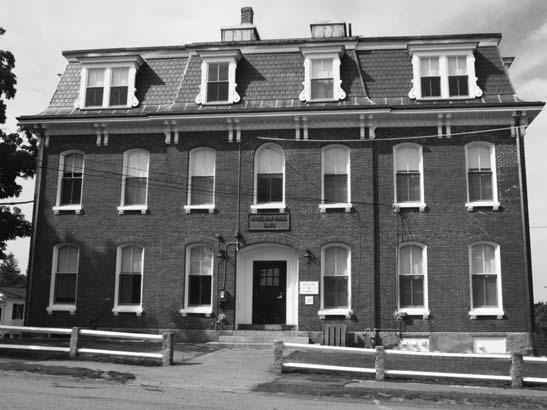
Bigelow Hall Today
Today’s students, who are accustomed to flat-screen TVs and have grown up in a digital age, might give the historic Bigelow little more than a glance as they walk or drive past on their way to more modern facilities. It would be an understatement to say that the campus has changed since Art Tsigas graduated. The four giants of Quad—Ferguson, Gray, the Schoolhouse, and Ansin—command most of a visitor’s attention. Still standing in the far corner is Spaulding Hall, but Sheedy Hall disappeared to make room for the Ansin Academic Building in 2004, the year after Elm Tree Hall opened its doors to 44 boys. In 2007, renovations improved the Ferguson Building and included the addition of the Richardson-Mees Performing Arts Center. This September, when students moved into Bigelow following renovations costing $500,000, they could have been excused for not noticing what was different. Much of what has changed— thanks to the skill of craftsmen working to preserve the history of the building—is practically invisible. Sunlight reflects off of the expertly welded copper flashing, gutters, and downspouts, and it passes right though every custom-made replacement window; both outside doors, which were known to admit both light and cold air, were replaced with energy-efficient clones; new roofing has replaced the old; and new drainage ensures that rainwater will now circumvent the building and pool in an underground tank to be released slowly to avoid flooding following storms. Once inside, returning students might have noticed new stretches of carpet and improvements in the bathrooms.
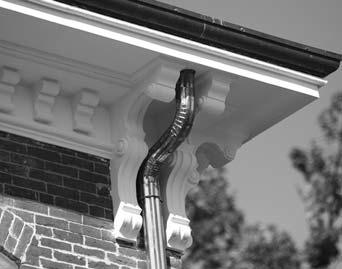
Here are detail photographs of the two front corners of Bigelow Hall, showing the edge of the copper flashing and (left picture) the rebuilt dentils surroundingthe copper downspout where a hole in the eaves was repaired.
Another change is that its residents no longer wear jackets and ties except, perhaps, for Halloween because today’s residents are girls. What has not changed at all over the years of renovations is how it feels to live in Bigelow. Yen Kim Le ’08, an American of Vietnamese descent, lived in Loomis House before moving into Bigelow Hall to serve as a proctor with Bermudan classmate Takashii Sweeting. Yen, who proctored in Loomis as a junior, holds nothing back in describing life in Bigelow with 19 other girls. “I loved living in Bigelow! For me, being a proctor there was really easy since the dorm was mostly upperclassmen. Everyone was mature and respectful. In the beginning of the school year, I thought that it would be a challenge getting everyone in the dorm to bond because Bigelow’s interior architecture is not open, and floors and hallways distance rooms from each other. Also, the girls already had close friends, and, since they were really busy in school with sports, the arts, college applications, and other activities, it did not seem as if they had the time to mingle or get to know others. But I was wrong. Every Sunday night, after our weekly meetings, everyone would linger in the common room to catch up and talk about her weekend. Everyone got along really well. Honestly, as proctors, Kashii and I did not have to do much to keep the dorm running smoothly.” Yen recalls that once, during the presidential primaries and caucuses, a few girls gathered on the stairs to discuss who should lead the country. “That small group turned into more than half of the dorm,” she says. “It showed how everyone was willing to listen to others and share beliefs and ideas.”
She remembers how dorm parents Ms. Sadler (now Mrs. Makrauer) and Ms. Phillips also drew the girls together, sometimes with little notice. “Everyone had fun at a holiday party that Ms. Sadler threw in her apartment, and Ms. Phillips helped Kashii and me organize a spontaneous dorm barbecue.” It was not unusual, Yen explains, for a dorm parent to get into long conversations with students in the evening. “They connected with everyone really well,” says Yen. According to Ms. Phillips, living in Bigelow was made more enjoyable by Yen’s unannounced visits: “She would stop by, plop down in my armchair, and proceed to critique my shabby furniture and decorating skills. And then we would talk about whatever was on her mind—school, college, girls in the dorm she was concerned about or who were doing well.” Maddie Penkoff ’08, like Art Tsigas, remembers episodes of dorm life that are unforgettable for other reasons. “One night, Sam [Greenberg ’10] and I went to bed right after study hall. We were dead to the world when all of a sudden we heard the loudest ringing noise ever. It was a fire alarm! I jumped out of my bed and ran out into the common area in our dorm room and yelled to Sam, ‘Get up, there’s a fire!’ I yelled as if our own room was on fire.” As it turned out, it was a false alarm. In preparing her clothes for the next day of school, which was a dress-up day, another girl had set off the alarm by steaming the wrinkles out of her clothes in the shower. “Everyone in the dorm was moping around, half asleep, outside, so angry at her for setting off the alarm.”

Students and faculty alike have stories from their time in Bigelow. Ms. Phillips counts among the pleasures of Bigelow, she says, “hearing about all of the teachers who have passed through this dorm before me—hearing stories from teachers who lived here when it was a boys’ dorm and when the room I use as my walk-in closet was actually a bedroom!”
Imagine a faculty member, say, in the 1960s, innocently relaxing in his first-floor apartment at the very moment when a student secretly shares with his third-floor roommate the plans he has for the evening—after curfew. According to Dick Jeffers, who lived in Bigelow from 1961 until 1966, he needed neither a meerschaum pipe nor a sidekick named Watson to get to the bottom of some Bigelow Hall mischief. “I don’t know if it is still the case, but when I lived in Bigelow Hall, there were air shafts in the building that made it possible, if you were in the first floor rooms on the left-hand side, to hear people who were speaking on the third floor on the right-hand
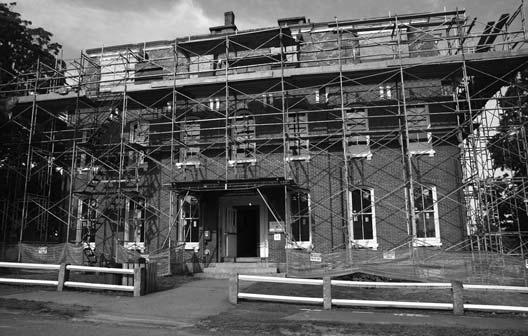
The dormitory surrounded by scaffolding during the summer of 2009
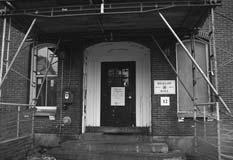
side. All I had to do was sit in my apartment and listen. Every once in a while, there was something I heard that I had to react to, and, the next day, when I confronted the students, they wouldn’t have a clue how I knew what I knew. In response, I would smile and say, ‘We know everything.’” Some students prudent enough not to speak of their plans were nevertheless dumbfounded when, in the dark of night, they were suddenly standing face to face with a flashlight-wielding Mr. Jeffers behind Bigelow. Frustrated with poor reception on his television, he had run a wire a few nights earlier from the rabbit ears of his television to the metal fire escape to improve the picture. “I was sitting in my apartment when the picture suddenly started rolling, and then I heard something: Kids were coming down the fire escape! Well, I scooted around the dorm and caught them coming down. A couple of nights later, they tried again and the same thing happened. From then on, the wire from my rabbit ears to the fire escape was a permanent fixture; every time the picture rolled, I ran around and caught kids coming down the fire escape. Not until much later did they understand,” he adds, grinning. Mr. Jeffers remembers not thinking much of fire drills. He shared every dorm parent’s fear of students not escaping from the dorm— especially a dorm as old as Bigelow Hall—in the event of a fire, but fire drills held when students are waking up or going to bed didn’t make much sense to him. When he held a fire drill at 1:30 in the morning, he watched as a student exited one side of the building and reentered on the other without leaving the fire escape. “It took about 15 minutes to clear the building, and I figured the building would have been gone in five,” he says. He did what a dorm parent should do: “After the fire drill, I held a dorm meeting and explained how unacceptable the results were and how everyone had to take responsibility for others. By then it was about 2 a.m. and everyone seemed to understand; they all went to bed.” After explaining that students on scholarships needed to rise ahead of others to get to work in the kitchen, he noted that one such student lived in Bigelow. “Well, at 5:30, his alarm went off and the dormitory emptied. One little alarm clock cleaned out the dormitory! A teachable moment paid off!” Like today’s faculty residents, Mr. Jeffers would visit with students in the dorm, and they were certainly the beneficiaries of Mrs. Jeffers’ oven-baked goodies in addition to Saturday evening trips to Ayer to collect pizzas. And, just as today’s students will long remember the excitement of watching the Obama election results on television, residents of Bigelow in 1964 still talk about the momentous occasion that brought them together. “The Beatles were making an appearance on The Ed Sullivan Show, and the kids, who were not allowed TVs in the dormitories, petitioned me to watch the show; I’m sure the same thing happened in most of the dormitories that night. Bev and I had a 19-inch TV on a trolley, so I wheeled it out into the hall and positioned it inside the front door of the dorm. All the kids sat on the stairs, all the way up; it was like a peanut gallery. Together, we sat and watched the Beatles, and they still talk about that evening as being one of the highlights of their lives at Lawrence Academy. It was fun to be part of that whole thing. A moment in Bigelow history.” Bigelow Hall—for Art Tsigas, Yen Le, Maddie Penkoff, and Dick Jeffers—has changed little in more than 50 years. It has undergone yet another round of renovations, and, according to Stacey Low, director of residential life, the residents will notice something new come winter: “Now that the work is done, the dorm will be energy efficient, and Bigelow residents, as well as the school’s bottom line, will truly feel the difference as temperatures begin to dip.” It was built during the Civil War, but Bigelow Hall has the same history as other dormitories, large and small, on Lawrence Academy’s campus: a history of adults offering its residents the vigilant supervision and welcoming warmth that make a house a home.

Dick Jeffers on a Moment in Bigelow History
“TVs were not allowed in the dormitory, and one February night, at the beginning of study hall, I shut off my TV and walked out of the building only to realize that I could still hear my TV. I walked back into my apartment, but my TV was off. ‘Aha,’ I said to myself. The next day, during classes, I came back to the dormitory and went to the room across the hall and did a little research. At the bottom of a big laundry basket was a box, and inside the box I found a TV set, which I took and put in my closet. I never said a word to anybody.
“At the end of the year, after graduation, I saw one of the boys, who lived on the Cape, sitting outside the dorm waiting for a ride home.
“‘Mr. Jeffers,’ he said, ‘I never told you this, but I had a TV set and it disappeared in the middle of the year.’
“‘Jeez, Rodney, why didn’t you tell me?’
“‘Well, I know I wasn’t supposed to have it in the dormitory….’ I walked into my apartment and returned with his TV set. When I handed it to him, he almost fell over. Rodney Corson ’62 owned a Cadillac dealership until he retired recently.”
Bigelow Hall History Bigelow Hall History
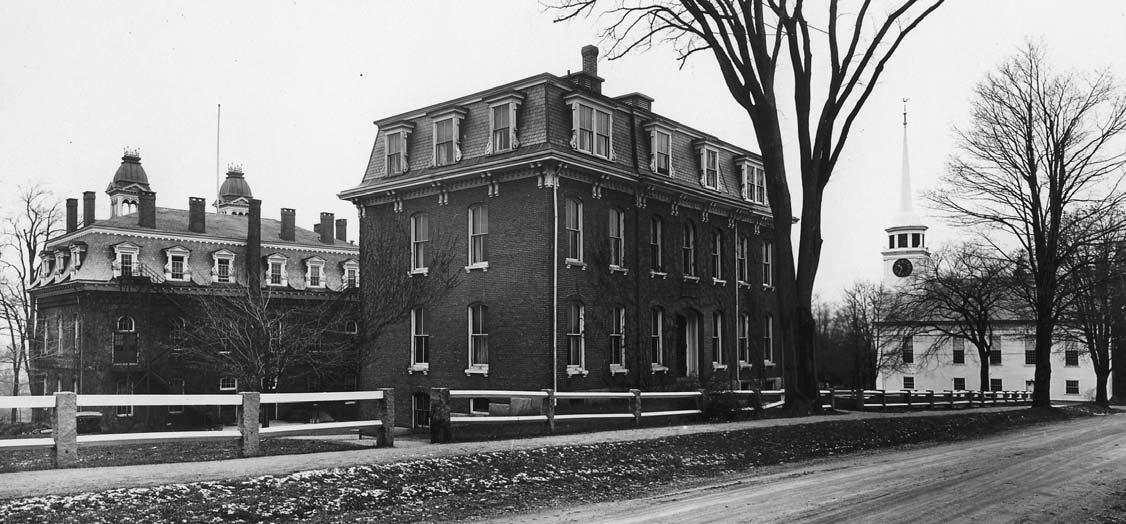
This undated photograph of Bigelow Hall provides the perspective necessary to see nearly all of “Old Main,” the schoolhouse known officially as Academy Building, which was erected in 1871 and burned to the ground on May 27, 1956.
Found in the soil near Bigelow Hall, this Napoleonic medal was minted only in 1789. The bust still visible is of Lord Thurlow wearing a Revolutionary War-era hat; on the other side is a draped bust of The Right Honorable William Pitt. Lord Thurlow was appointed attorney general in 1771 and took office under Pitt, who became secretary of state in 1756 and was appointed prime minister of Great Britain in 1776.
In April 1863, when Bigelow Hall was commissioned by the Board of Trustees, the Civil War was in full swing, with the Battle of Gettysburg among the bloodiest of battles to be fought in July. Notable births that year included those of Henry Ford, philosopher George Santayana, and Archduke Franz Ferdinand of Austria. According to the account provided by Douglas Frank in The History of Lawrence Academy in Groton, 1792–1992, there were four houses standing along Powderhouse Road, which at the time was named High Street. They are known today as Dr. Green House, built in 1839; Alumni/Development House (1840); the Unitarian Church’s parsonage (1844); and the Winthrop L. Sheedy Faculty House (1855). In an inventory of properties that he conducted in the Town of Groton for the Massachusetts Historical Commission in 2006, Sanford Johnson ’83 describes Bigelow Hall as a two-and-onehalf-story brick building in the Second Empire style. Among its distinctive features, he lists “the slate-shingled Mansard roof with four dormer windows across the façade, the cornice with paired brackets and modillions, and the central pavilion that projects slightly from the façade and contains the central three bays.” Because it grew in popularity during the presidency of Ulysses Grant (1869–1877), the Second Empire style is sometimes called the General Grant style. Archival records show that, in its first year of operation, five of the school’s 148 students resided in the dorm with one faculty member: George Homer Ball (Milford); Charles William Bardeen (Fitchburg); Charles Michael Hafey (Cincinnati, Ohio); Everett Frances Shattuck (Pepperell); and Randall Spaulding (Townsend Harbor). Executive Committee minutes recorded in 1865 indicate that the Board set at $2.50 the maximum amount that residents were to be charged for boarding there each week. It was common practice for students not from the immediate area to board with families in the town of Groton or in the homes of LA instructors on campus—including the principal’s. The mention of a campus building surfaces in committee minutes over the years, typically on the occasion of its being renovated. In the September 14, 1912, issue of Turner’s Public Spirit, readers learned in “Lawrence Academy Notes” that the dormitory “had been renovated from top to bottom” during the summer recess.
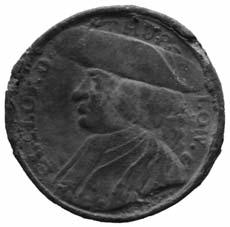


Archival photographs, perhaps from the 1950s, of two rooms in Bigelow Hall: left, a bedroom accommodating four students; right, the common room.
An unpublished source in the school’s archives states, “Extensive renovations at the turn of the century included adding plumbing, steam heat, painting, and masonry repair,” and it included this description of the rooms: “The interior was divided into several suites, each consisting of a study-room, two bedrooms, and an adjoining bath.” In 1974, Bigelow became a girls’ dormitory. In 1977, Bigelow was completely rewired; its staircase was repaired; apartments were remodeled to include kitchens; and “The Caves,” located in the basement of the building and having served briefly as the day student lounge when only boys attended the school, were transformed into dormitory rooms. In 2003, Steve Janes ’86 and Dotti Mack Janes ’81 donated materials used in renovating the bathrooms. This summer, Bigelow was fitted entirely with energy-efficient windows and outside doors, new roofing, and copper gutters; drainage was installed to ensure that rainwater flowing from the new copper downspouts circumvents the building and pools in an underground tank, allowing the water to be released slowly to avoid flooding following heavy rains. Bigelow Hall was named after the Honorable John Prescott Bigelow (1797–1872), who was born in Groton. Mr. Bigelow, as recorded in Mr. Frank’s account of the school’s history, “was enchanted over this tribute to his family, and he devised a legacy of $10,000 to be paid to the Academy (‘wherein my education commenced’).” A member of the Class of 1811, Mr. Bigelow graduated from Harvard College in 1815. In 1829, he was elected to the Massachusetts House of Representatives, serving there until becoming secretary of the commonwealth of Massachusetts (1836–1843). He served for three years as the mayor of Boston (1849–1851).

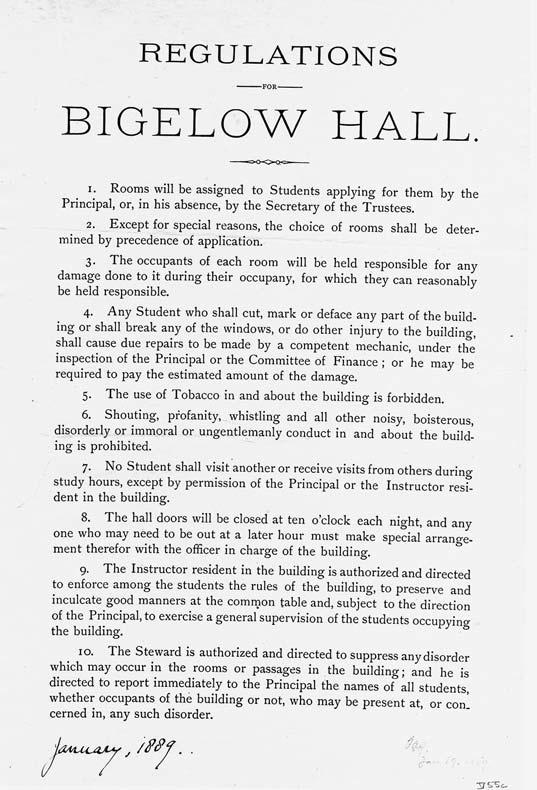
Mr. Bigelow is credited with having helped to establish the Boston Public Library. The fund used to begin acquiring books for the library was named the Bigelow Fund out of appreciation for his handling of Boston’s 1849 cholera epidemic soon after becoming the city’s mayor. Upon leaving public office, he served on the library’s board, eventually resigning in 1869 as a result of his declining health. Mr. Bigelow is also credited with overseeing a public water works that supplied the 137,000 inhabitants of Boston with clean water. During his tenure as mayor, the railroad connecting Boston with Canada and the Great Lakes was completed. He is buried at Mount Auburn Cemetery in Cambridge, Mass.
Recovered from the soil surrounding the Civil War-era building, thanks to the work of Greg Rotondi of Pepperell, an amateur historian and friend of the school, were a handful of artifacts. Dating from 1860 to 1880, the four pictured here are two pieces of an oil lamp (left), an underwear button, and what is believed to be the remains of a latch used on a leather-bound book.
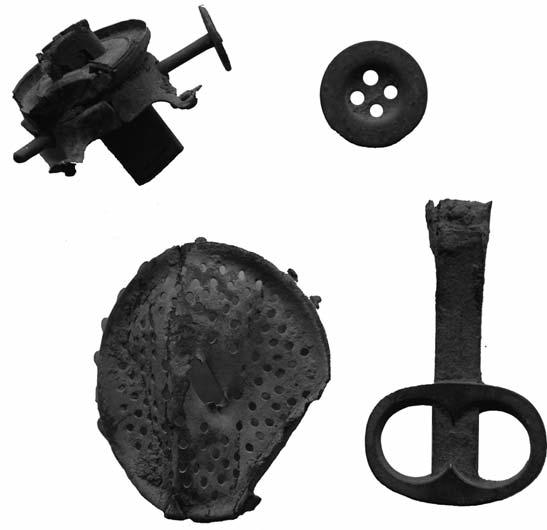
This “collage” of articles, archival photographs and materials, and unearthed artifacts was assembled through the efforts of several people. Molly Richardson, associate director of development, interviewed and photographed Art Tsigas ’56; Paul Husted ’64 supplied the archival photographs of Bigelow Hall, information that supplemented what appears in Doug Frank’s school history, and the January 1889 poster of dormitory rules on the previous page; amateur historian Gregory Rotondi, who has a standing offer to sweep disturbed earth on campus with his metal detector, found and identified the artifacts pictured on pages 7 and 9; and photographer Jon Chase took the photograph of the 1924 scene we recreated with seniors Caroline Leed, Sam Greenberg, and Caitlin Morrison.—AJB

When the Executive Committee of the Board of Trustees at Lawrence Academy called on architect Thomas W. Silloway (1828–1910) to design Bigelow Hall in 1863, he had already completed the building for which he is best known today, the Vermont State House in Montpelier (1857), when he was 30 years old.
Born in Newburyport, Mass., Mr. Silloway lived and worked as an apprentice to a house carpenter. He moved to Boston in 1847 and worked in the office of Ammi B. Young, the architect of Boston’s Customs House and the previous Vermont State House, which had burned in January 1857. Following his work on the Vermont State House, Mr. Silloway studied for the ministry, and, in 1862, was ordained as a Universalist minister. Until he left the pulpit five years later, having served the congregations of three different churches, he worked as both an architect and pastor.
Mr. Silloway is credited over his lifetime with having designed as many as 400 edifices used for religious purposes. According to Dr. William P. Marchione, who specializes in Boston-area history, Mr. Silloway earned high praise for his 1857 commission in Vermont: “The great architect Stanford White later described the 1858 Vermont capitol as the finest example of Greek Revival architecture in the country.” Thomas Silloway also published books, according to Dr. Marchione, most notably Cathedral Towns and Intervening Places of England, Ireland, and Scotland: a description of cities, cathedrals, lakes, mountains, rivers, and watering places (Boston: A. Williams, 1883), in addition to a carpentry textbook. He wrote on topics including theology, sacred music, architecture, and travel. Mr. Silloway, who never married, died in his Allston home at 15 North Beacon Street.
Dr. Marchione identifies the following structures, designed by Mr. Silloway, for the consideration of those interested in viewing the architect’s work: “The Church of the Unity at 91 West Newton Street in the South End (1859); the First Universalist Church in Arlington (1860); the Fourth Baptist Church in South Boston (1864); the Second Methodist Church in East Boston (1865); Dean Academy in Franklin (1867); the North Congregational Church in Newburyport (1867); the South Abington Congregationalist Church (1867); the Milton Congregationalist Church (1867); The Rockport Town Hall (1869); the Winthrop Street Methodist Church in Roxbury Highlands (1869); the Cambridge Soldier’s Monument (1869); the North Congregationalist Church in Lynn (1869); the Pilgrim Congregationalist Church, in Cambridgeport (1871); the Attleboro Town Hall (1871); the Medfield Town Hall (1872); the Wood Memorial Church in Cambridge (1883); and the Zion Evangelical Lutheran Church in the South End (1900).”
Mr. Silloway also designed the Goddard Seminary in Barre, Vermont (1866–1870), and the Jenkins Memorial Library in North Conway, New Hampshire.
Note: This note on Thomas Silloway relies on statements attributed to Dr. Marchione at the following Web site: http://www.bahistory.org/HistorySilloway.html.










